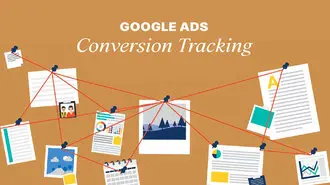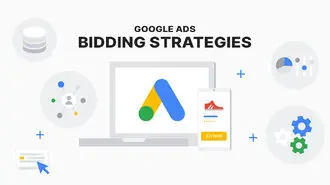Let’s be honest, without Google and its vast marketing platforms, the digital marketing landscape wouldn’t be what it is today.
This holds true even for paid online advertising. With its immense scope and reach, Google Ads is the top choice for placing ads. But with countless brands vying for attention, the platform has become quite crowded.
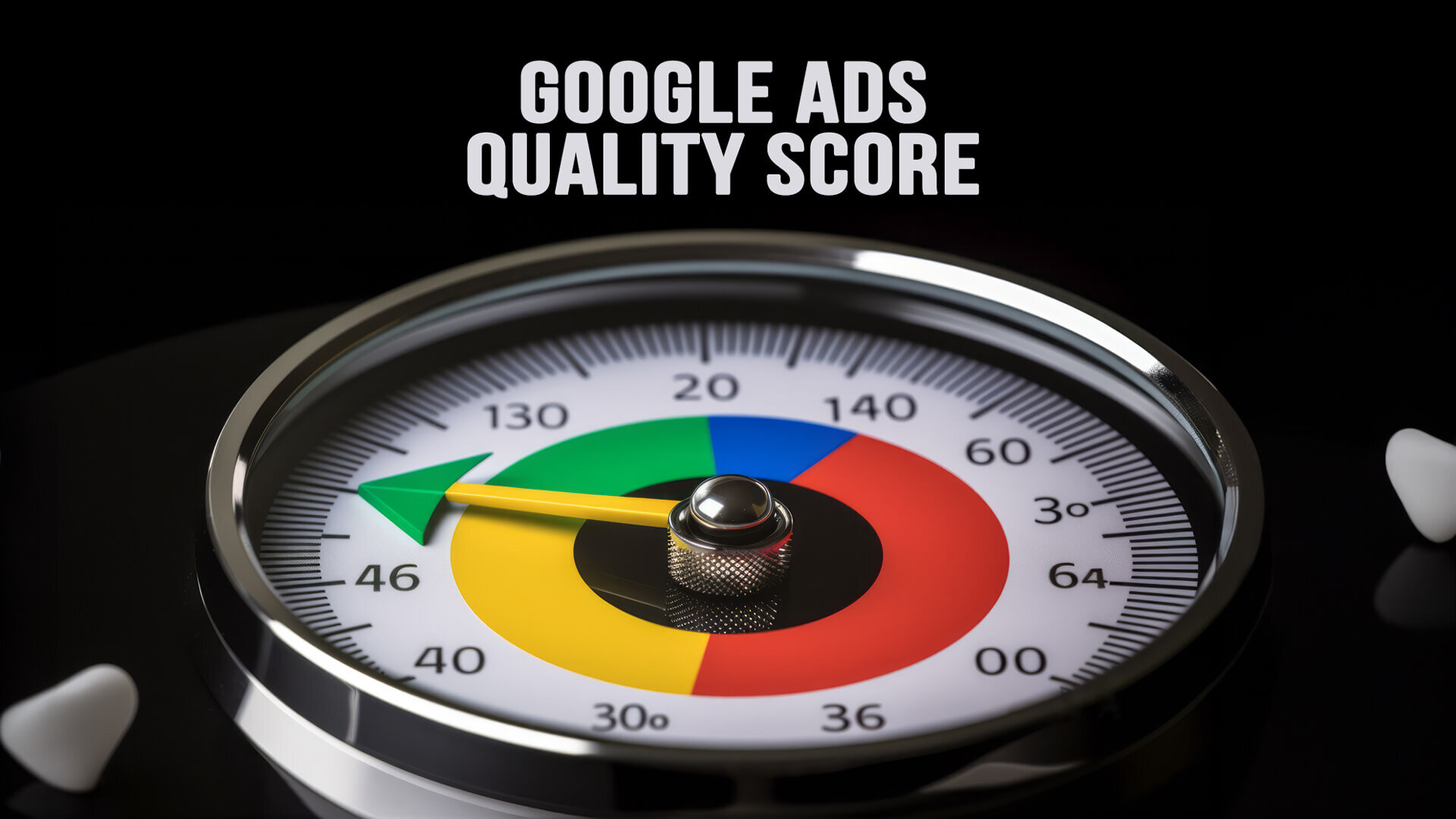
To stay ahead of the game, it’s crucial to work on improving your Google Ads quality score. You might be wondering, “How can I do that?” Well, that’s exactly what this guide covers.
So, without any further ado, let’s dive right into it!
Want to receive updates? Sign up to our newsletter
Each time a new blog is posted, you’ll receive a notification, it’s really that simple.
What Is A Google Ad Quality Score?
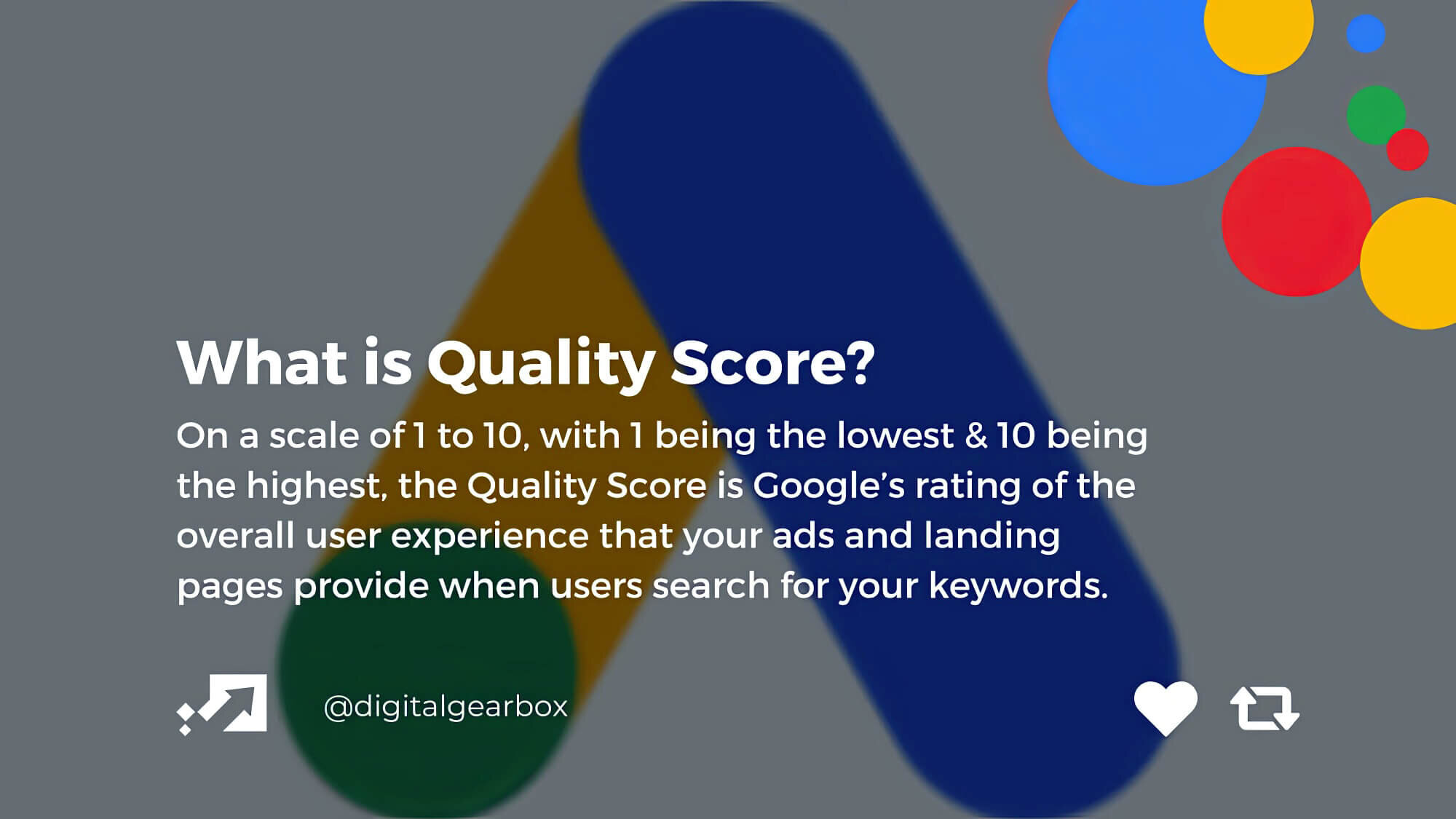
Essentially, a keyword’s quality score in Google Ads provides an assessment of your ad’s overall effectiveness relative to that of your competitors. The ad quality score is measured on a scale of 1 to 10.
A higher quality score means your ads are more relevant to user searches than your competitors’. Conversely, a low score shows that competitors’ ads are hitting the mark better.
In short, the quality score can be used as a diagnostic tool to identify any possible improvement areas for your paid ads. It can also be used to develop a robust advertisement campaign to keep your business ahead of the competition.
Why Is Google Ad Quality Score Important?
The quality score significantly affects the success metrics of your Google Ads campaign, making it a crucial tool for online advertising. This score can impact several aspects of your ad campaign, as discussed below.
A. The Visibility Of Ads
Your quality score plays a big role in whether your ad appears in search results for specific terms. With a high score, your ads pop up when users search using relevant keywords. But if your score’s low, your ads might not show at all.
B. Ad Position Or Ad Rank
The quality score determines the ranking of your ads as well. In other words, it affects the position of your ads in the search engine results pages. If your ads have a higher quality score than your competitors, they will be shown at a higher position in Google Search results.
C. The Visibility Of Ad Extensions
Additional assets, such as ad extensions, will only be shown if your ads have a high enough quality score. These extensions often contain useful information about your business and help improve click-through rates. Although, if your ad has relatively poor quality, these extensions will not be shown to users, which can disadvantage your business.
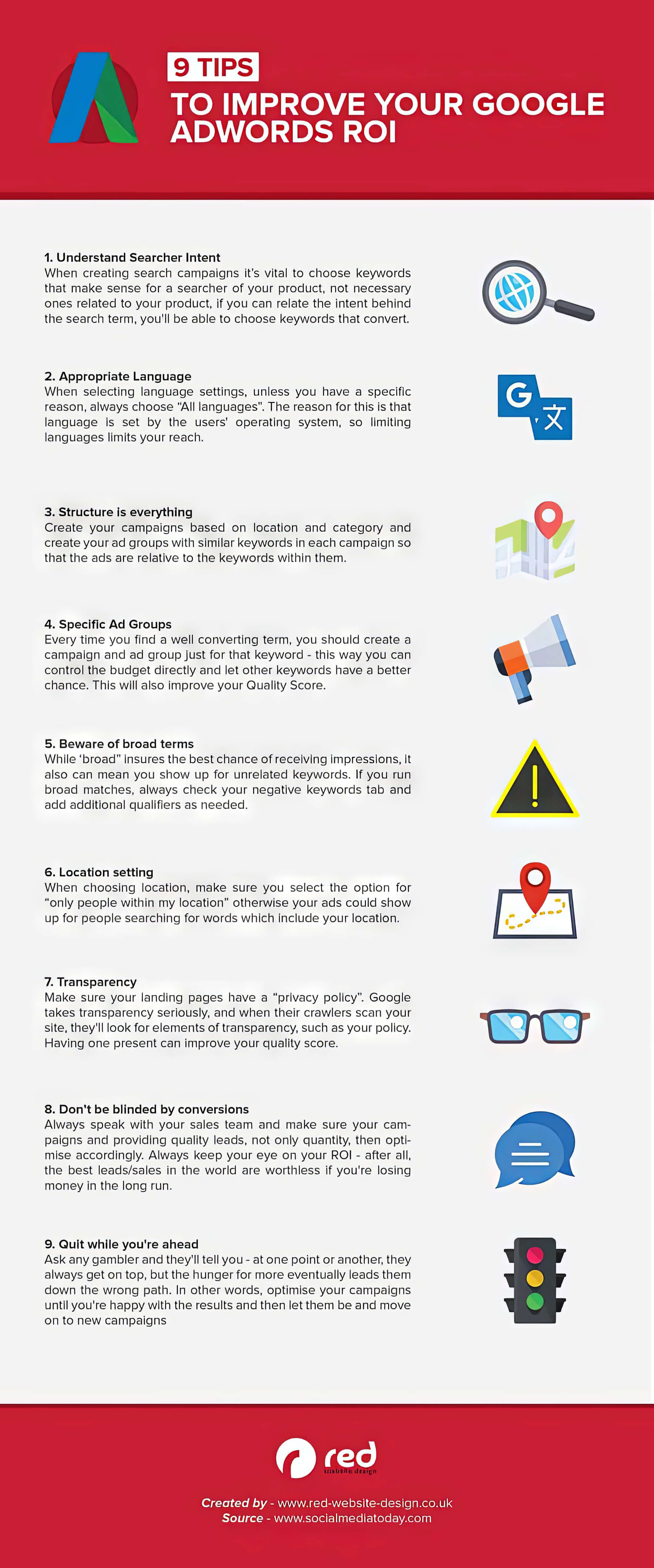
D. The Number Of Times Your Ad Is Shown
Besides the visibility and position, the quality score impacts how often your ads are shown to searchers. An advertisement with a good quality score will naturally have more impressions, and vice versa.
E. Ad Performance
When your ads are of high quality, they will likely have a higher click-through rate and conversion rate. Those, in turn, improve the performance of your ads and generate revenue for your business.
F. The Money You Pay For Each Click
This is one of the most vital aspects determined by the quality score. The quality score determines the cost-per-click or CPC of your ads. A high-quality ad will lower your CPC, making your campaign more cost-effective. However, if your ad has a low-quality score due to low-quality keywords, your cost per click will be higher, reducing the cost-effectiveness of your ads.
What Factors Influence A Google Ad Quality Score?
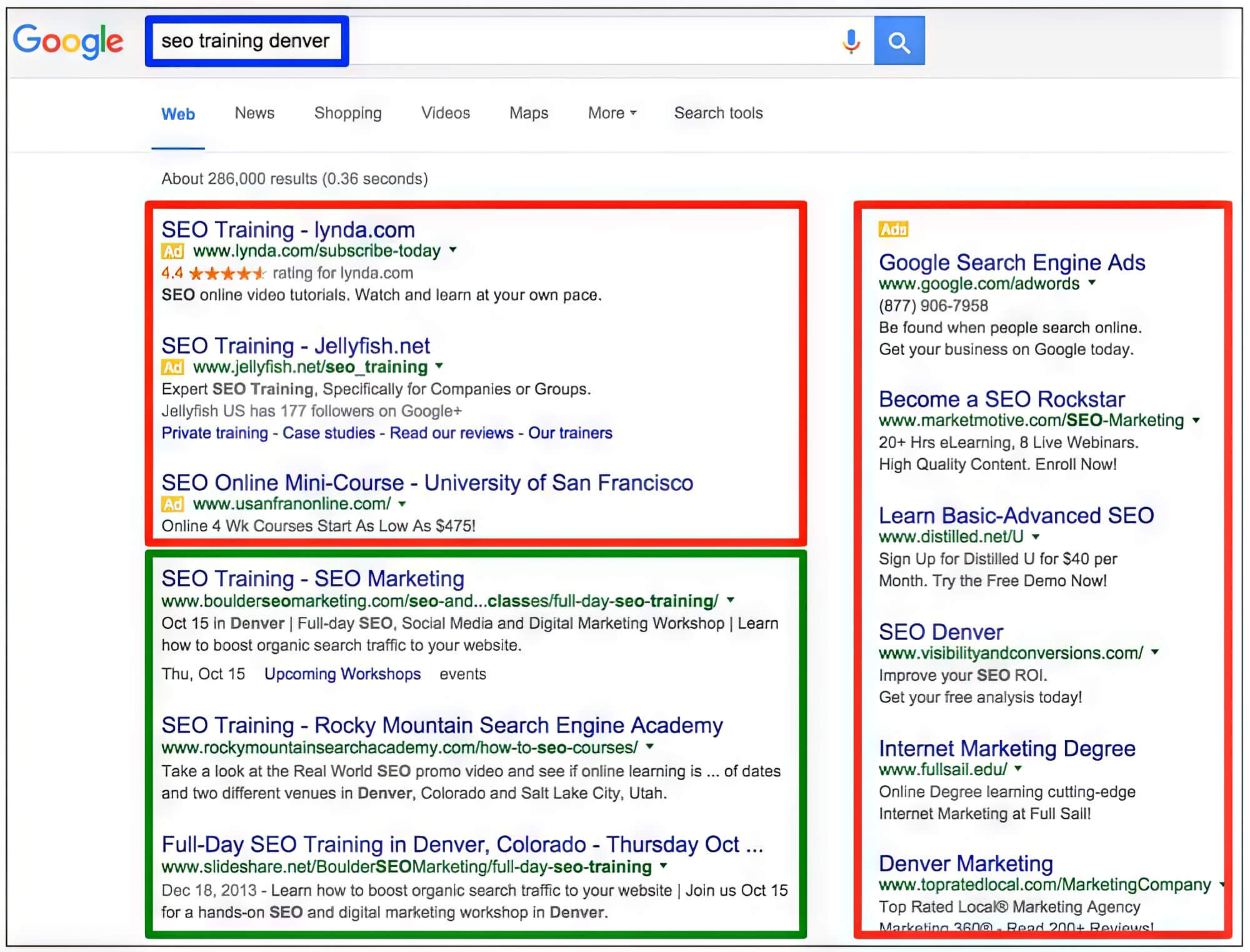
The above discussion is just Google Ad quality score explained simplistically. On that note, some underlying factors influence this score. For your convenience, we have discussed them below.
A. Ad Relevance
Keyword relevance is a significant factor in the ad quality score, reflecting how well your ad aligns with the user’s search intent. Specifically, it is how your ad relates to the keywords searchers use.
Therefore, having the right set of keywords is crucial. Your ad might lose relevance if it has only a few components that match the same keywords the user has searched. Contrarily, if your ad contains all the keywords used by searchers, your ad will become highly relevant
B. Expected Click-Through Rate (CTR)
The expected CTR estimates how many times users will click on your ads after seeing them. In other words, the expected CTR is the total number of clicks that your ads might generate. So, if your ad is likely to be clicked by users when they search for specific keywords, your expected CTR will be higher, and vice versa.
C. Landing Page Experience
The landing page quality score indicates the usefulness and relevance of your ad’s landing page to the user. If the landing page for your ad contains relevant information regarding the user’s queries, it will improve the overall ad experience for them. If you can provide a great landing page experience, you can successfully convert the visitor into a paying customer.
How To Optimise Ad Quality Score?
To improve the effectiveness of your ads, you will need to perform ad quality score optimisation. You can follow some of the established ad quality score best practices, like the ones mentioned below.
1. Improve The Ad Relevance By Using Proper Keywords
Using effective keyword research to find the right terms is a top way to optimise your ads. If your ads match the keywords they’re targeting, you’ll see a noticeable boost in performance.
Ensuring that your ads’ text aligns with common search terms is essential. This way, you’ll improve the relevance of your ads, which is a critical factor that Google’s Quality Score affects.
However, if there are multiple keywords that cannot be implemented within a single ad, you can create different ad groups. Make sure to use the relevant keywords for each ad group so that they can match the users’ searches better.
Alternatively, you can group the ad keywords into specific themes. For example, if you offer electrical services, you can use themed keywords for “lighting systems.” Similarly, you can have another set of themed keywords for “wiring installation” and so on. That way, you can improve the relevance of your ads.
2. Enhance The Ad Click-Through Rate
This is a highly effective optimisation strategy for Google Ads Quality Score since a higher click-through rate means more people are clicking on your ads. Naturally, that leads to a healthier conversion rate, ultimately increasing revenue.
To that end, you can edit the ad text to be more appealing to users. Try to keep the text short, specific and free from unnecessary fillers. Similarly, ensure that the text details on the ad match the keyword intent. If the user finds the relevant information in the ad, they will be likelier to click on it, thereby improving the expected CTR.
Also, highlight the unique aspects of your product or service. If you can make your brand stand out, users will be enticed to click on your ads.
Apart from that, you need to include a compelling call to action in your ad. For that purpose, you can use specific keywords (buy, sell, try, order, browse, etc.) to successfully create a sense of urgency in the user. Consequently, they will be more likely to click on your ad.
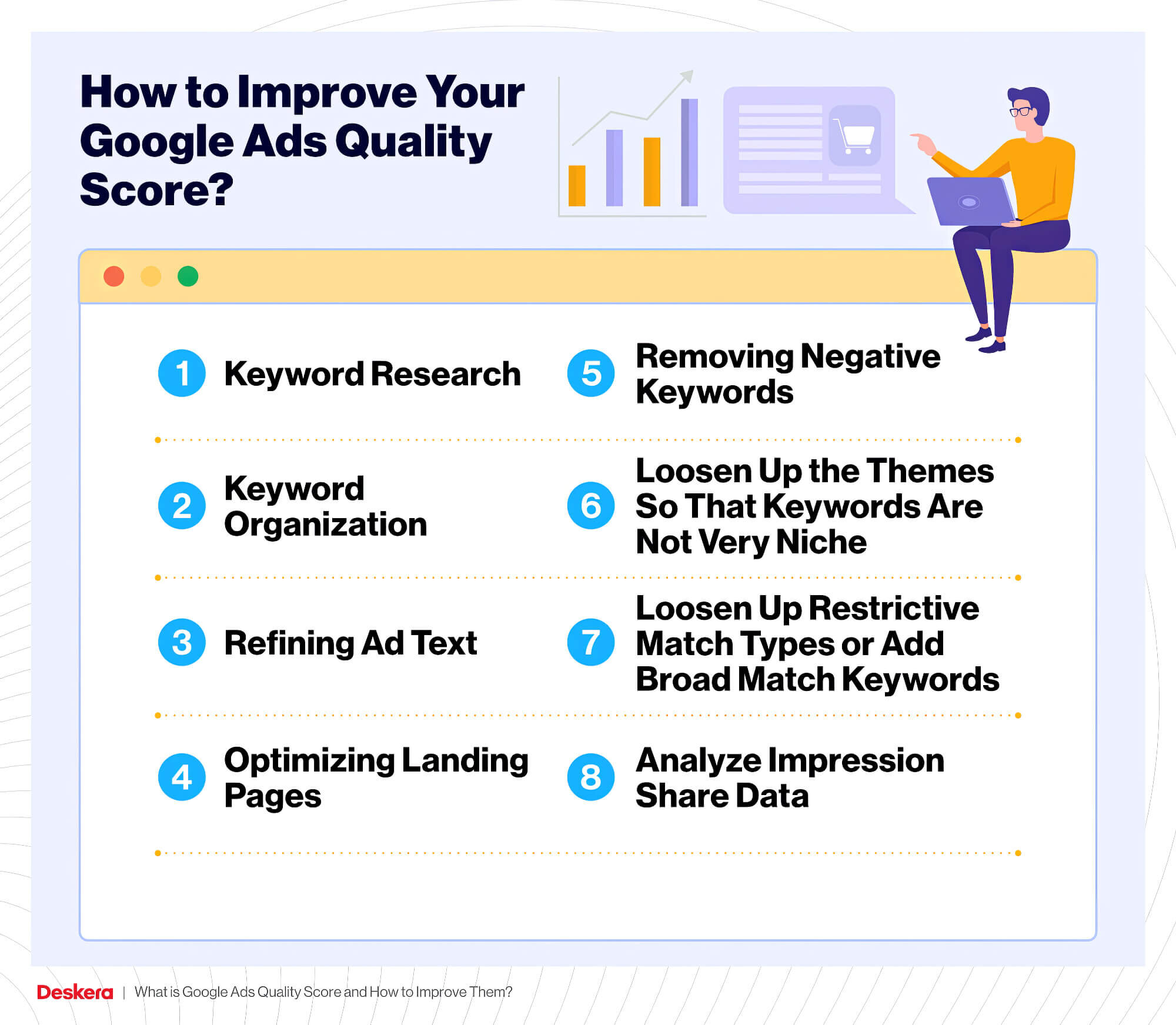
3. Improve Your Landing Page
In addition to developing your ads, you need to develop your landing page. After all, the landing page experience helps convert the users into paying customers, as we have stated before.
Here, you should maintain consistency between the Google Ads and landing pages. If the landing pages are not consistent with your ads, the visitors will develop a negative perception of your business. For example, if you have put out an advertisement about hats, the landing page should list your inventory of hats and nothing else.
Instead, if it lists your stock of regular clothing items, it might confuse the users who click on your ad. Or, if the ad leads back to the site’s home page instead of the specified content, the visitors will have to search for the products manually.
In both of these above scenarios, your ad becomes misleading for the users who click on it. As such, it will fail to remain consistent with the landing page, which, in turn, will negatively impact the landing page experience.
However, if the content on your ad is the same as the landing page, the users will quickly find what they are seeking. That will ultimately motivate them to purchase from your site.
On that note, ensure that the message on your ads is similar to your landing pages. These messages include any offers or calls to action you provide in the ad. For example, if your ad claims your clothing products are on a 20% discount, ensure the landing product highlights this aspect. That, in turn, will help to improve your quality score.
4. Use The Quality Score Alongside Other Metrics
Using other metrics alongside the quality score, such as the click-through rate, engagement ratings or conversion rate, is always a wise idea. Doing so will help you to gain a better understanding of your advertising campaign’s success rate. Likewise, it will give you a clearer idea about the things that need to be improved.
You can use metrics such as conversion rates at the keyword level to gauge the effectiveness of your landing page. If your conversion rate is low, you can use it to improve the landing pages accordingly.
Additional Tips For Increasing Ad Quality Score
The strategies mentioned above are vital in improving ad quality scores in Google Ads. However, if you want to get the best value out of your ad budget, you can follow these handy tips to improve the quality score even further.
1. Use Negative Keywords
In the domain of pay-per-click advertising, negative keywords are entities that prevent ads from showing when users search specific keywords or phrases. Simply put, negative keywords prevent your ads from appearing alongside irrelevant search queries. As a result, you can improve the quality score by keeping your ad relevant to specific keywords and minimising unwanted clicks that can increase your ad spend.
When building a list of negative keywords, you must include only entities related to items you don’t sell. That will help you to build a targeted ad campaign. For instance, if you sell all types of footwear except boots, you can add “boots” as a negative keyword. Then, your ads won’t appear when users search using this particular keyword.
In that context, you should ensure that the negative keywords do not overlap with those you are targeting since that will be counter-productive.
2. Optimise Your Site For Mobile Devices
It is no secret that a large number of people nowadays use mobile devices to search for stuff. This is why you must ensure your site and landing pages are mobile-friendly. That way, users won’t have a lot of difficulty navigating your site, which will improve the overall landing page experience. And that will ultimately improve the quality score for your ads.
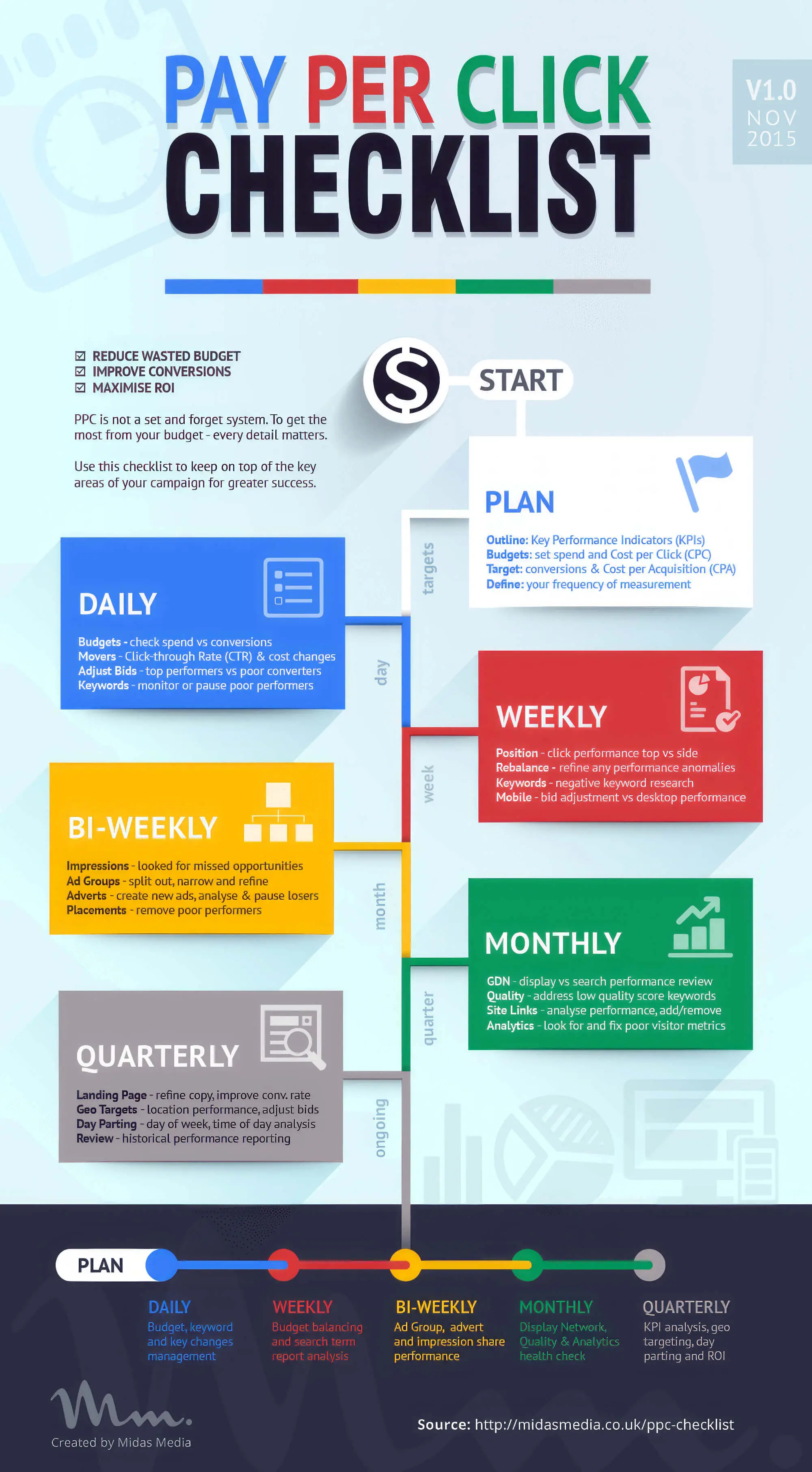
3. Use As Many Ad Extensions As Possible
As we have mentioned once before, ad extensions are used to provide helpful information about a business. You should include as many of them as possible in your ads (provided the rest of your ad is good enough). They can be helpful in improving the expected CTR, which indirectly improves your quality score.
4. Improve Site Speed
Another useful tip for improving your ad quality score is to improve the speed of the website. By speed, we refer to the landing page’s loading speed. Believe us - no one likes to visit a slow or poorly designed website that takes ages to load. That can drastically affect the user experience and will drive potential customers away.
So, if you want to convert the users into paying customers, you need to optimise your site’s landing pages (and every other page). This will ensure visitors have a smooth experience after clicking on your ads, enhancing the quality score.
How To Check Your Google Quality Score?
Checking the quality score for your Google Ads is pretty simple. First, you’ll need to log in to your Google Ads account. Then, you’ll need to select “Keywords” from the menu on the left. You will see a quality score column icon situated near the upper right corner of the table. Click on it and look for “Modify columns for keywords”.
Once you have found it, select the “Quality score” section. Then, you can add the quality score or any of its component metrics to the statistics table, allowing you to view them.
How Does Google Calculate the Ad Quality Score?
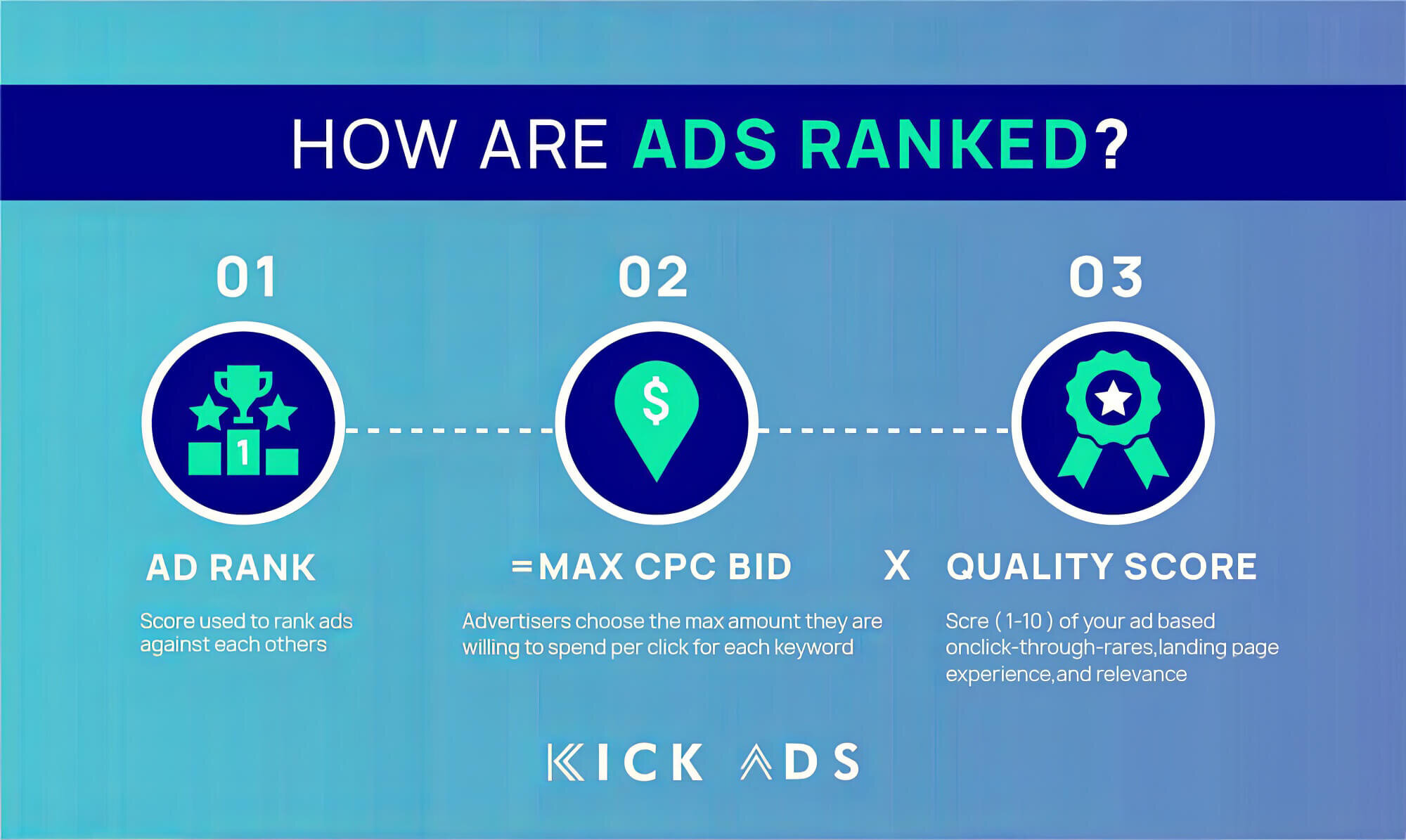
An ad’s quality score is calculated by taking into account the three factors of ad relevance, expected CTR and landing page experience. A rating indicates the status of each of these factors. There are three standard ratings here, which are “above average,” “average,” or “below average”.
These ratings are provided based on the performance of your ads over a period of 90 days. The performance is evaluated by comparing it with the ads put up by other advertisers. In this regard, each of the above ratings has a numerical value associated with it.
For expected CTR and landing page experience, the below-average, average and above-average values are 0, 1.75 and 3.5, respectively. But for ad relevance, the corresponding values are 0, 1 and 2.
Quality score is calculated by adding up the scores of the three factors: ad relevance, expected CTR, and landing page experience, then incrementing the total by one. Keeping that in mind, here is the simple formula that is used to calculate the quality score:
The quality score formula is calculated as follows: Quality Score = 1 + Ad Relevance + Expected CTR + Landing Page Experience
So, as you can see from the above formula, the base quality score is 1, which increases the better your ads are.
Elevate Your Ad Game with Google’s Quality Score!
That brings us to the end of this detailed Google Ad Quality Score guide. By following the ad quality score tips and best practices mentioned here, you can create compelling and cost-effective ads simultaneously.
Of course, if you are not as knowledgeable in these things, or have little time to dedicate towards your Google Ad campaigns, then we fully understand. In that case, you can get in touch with us, and we will help you out.
Here at sitecentre®, we have a team of expert marketing professionals who are well-versed in these things. Simply tell us the specifics, and we will take care of everything for you.
We’ll create the ad copy and optimise the quality score for the keywords, landing pages, and everything else so that you get the best value for your ad budget.



